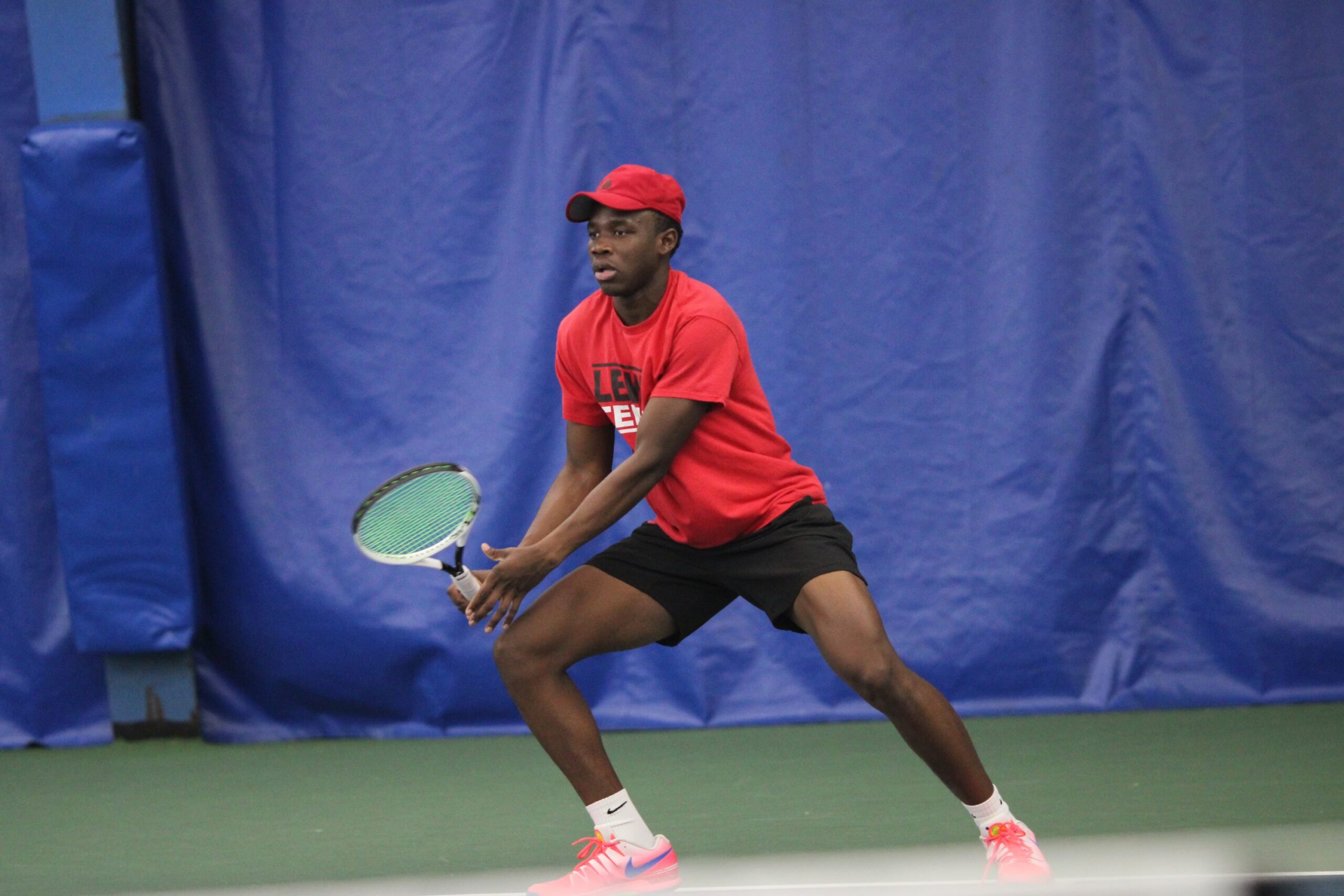
Strength, strategy and sustainability. Tennis is a sport that is not only challenging physically, but mentally, as well. Opponents must be analyzed by the minute and plans must be developed by the second. At the same time, the players’ endurance is tested by flying serves and all-too-quick returns. Tatenda Mutetwa, a sophomore supply chain management major, gave his intel on the game and the effort that goes into it.
Like most sports, grace is just as important as strength. One must be accurate but also forceful. As Mutetwa explained, “you can never get away with one or the other. It’s a combination of both.” He emphasized that in men’s tennis, most athletes are pretty physical, so they will use that physicality to their advantage. Although there are professional tennis players that are simply known for their “poetic” play like Roger Federer who is exceptionally precise in placement, not everyone can make the sport look that easy.
As a result, every player must have a different strategy. For example, Mutetwa shared, “If I’m five-foot-one, I don’t have the luxury of hitting a huge serve so I have to be more accurate. If I’m six-foot-one I can just stand there and drop a bomb.” Therefore, each athlete must adapt their game to fit their strengths and rely on one technique more than another. Despite a player’s strength, both power and precision are ideal for a well rounded player.
Although rallies are the main part of a tennis game, they cannot exist without a successful serve. Mutetwa shared that between serving and the ability to rally, serving is the more important skill to perfect. “The serve in tennis is the one shot you can control. Every point starts out with a serve. Not every point has a rally in it.” In other words, if a player has an effective serve, they will be able to begin the point with an advantage and will be easier for them to win the point.
Since each player has their own unique set of skills, there are multiple playing styles. Some are more defensive and try to “play to the beat of the opponent.” Defensive players have very quick feet and can react very well to the ball on a whim. Instead of leading the rally, they will be patient and allow the offensive player to guide it. They last long in rallies, waiting patiently for the right moment to return the ball to a spot the other player cannot handle.
In contrast, an offensive player, like Mutetwa, is “looking to dictate, serve harder, make you run more and come to the net.” He admitted that he is not very quick so he is not comfortable playing defensively. Instead, Mutetwa looks for any opportunity to attack. When an opponent hits the ball slower or short, Mutetwa has time to run forward, overwhelm the other player, and finish the point at the net.
This can be difficult, however, depending on who a player is up against. Better players hide their weaknesses, so Mutetwa explained the importance of observation. When playing a match, one must analyze “what [the opponent] likes to do and the shot they look to hit the most. You will know their least favorite shot because they look to avoid that shot as much as they can.” After consideration of style, Mutetwa highlighted other aspects of the game, like, “Does he get frustrated? What frustrates him? Does he make bad calls? Anything I can use to have a competitive advantage.” In other words, Mutetwa said, “Singles is like chess. You’re trying to break down the opponent and unlock the next [step.]”
Singles and doubles may both technically be tennis, but the strategies they require are very different. Doubles consists of this observation, but is more a battle of creativity. “In doubles you have to get creative. You’re facing two brains, not one, which is a huge difference.” Just like singles, there has to be a plan, but if teammates are not on the same page, the plan will fall apart. The two must come together after each point and discuss their next move, what the target is, how they can improve and what they should continue doing. This means being creative in placement, too. “The spaces you have to hit it to are much smaller. You have no choice but to hit it into that space quicker.” One must find smaller pockets and switch up what where they hit more often, since making the player run is not as big of a factor.
The art of tennis is unique and complex. Amazingly, tennis players are able to process all of the details that go into it in seconds. Their drive and razor sharp focus make them the athletes they are, and, as Mutetwa said, enables them to play the game of chess with their rackets.
Photo Credits: Grace Sueflohn
